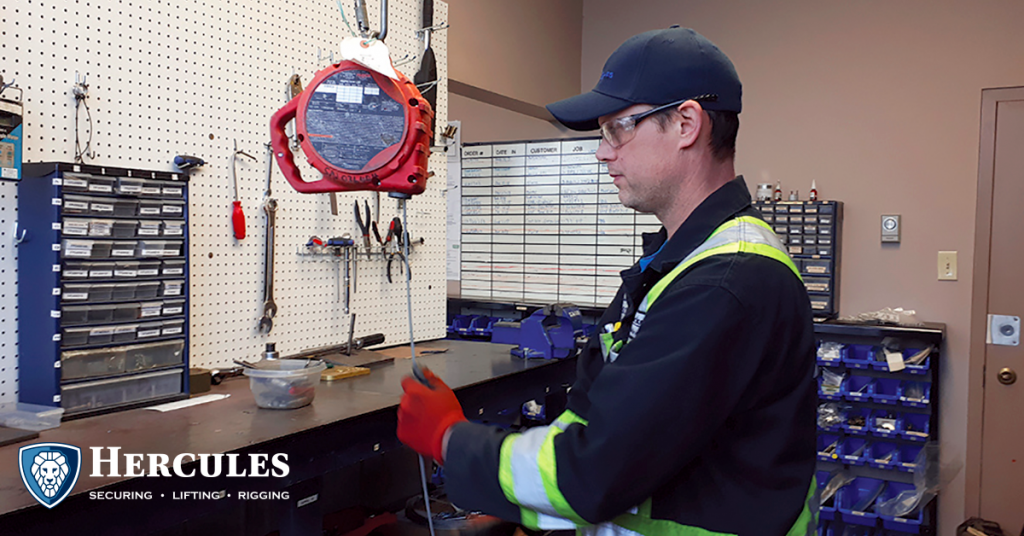Stuck in a Tight Spot? What to know in a confined space
Most workers will have to work in a confined space at some point in their career – although common, many workers and employers don’t plan or account for common hazards found in them.
Read on to discover commonly-found dangers in confined spaces and how to prepare for them.
WHAT’S A CONFINED SPACE?
A confined space is an area that:
- Is large enough to enter and do work in;
- Has limited entries and exits;
- Isn’t meant for long-term human occupancy.
- Examples: Silos’, tunnels, sewers, wells, underground utility vaults, an empty tanker trailer
WHAT’S A PERMIT-REQUIRED CONFINED SPACE (PRCS)?
Yes, it’s a confined space that you need a permit to enter – but a permit-required confined space also:
Contains or has the potential to contain serious safety or health hazards like:
- Engulfment
- Toxic Atmosphere
- Puzzling Configuration
- Heat or Cold Stress
- Slipping Hazards
- Flammable Atmosphere
- Oxygen Deficiency
CONFINED SPACE HAZARD: 2 FACTORS THAT CREATE HAZARDS
- Failure to see and control hazards associated with the confined space
- Atmospheric hazards
- Physical hazards
- Poor Emergency response time or plan
Many injuries or fatalities in confined spaces occur when other workers attempt to save coworkers injured in a confined space
- Nearly 60% of worker fatalities occur when trying to save someone else from a confined space hazard
- Nearly 60% of deaths in confined spaces happen to the would-be rescuer
CONFINED SPACE: KNOW THE HAZARDS
Hazard #1: Oxygen Deficiency
Normal air has an oxygen content of 20.8-.9% – when there’s less than 19.5% available, you’re in a oxygen-deficient space. When this level decreases, even by 1-2% the effects are felt immediately. When working in a space with this level, remember to wear a self-contained breathing apparatus (SCBA).
What leads to oxygen deficiency? Inadequate ventilation, poor air quality, oxygen consumed from welding, decomposition, rust are some of the factors that cause oxygen levels to drop.
Oxygen Deficiency Levels
- Minimum for safe entry: 19.5%
- Impaired judgement and breathing, accelerated heartbeat: 16%
- Faulty judgement and rapid fatigue: 14%
- Nausea, vomiting, inability to perform simple tasks, unconsciousness: 6-10%
- Rapid loss of consciousness, death in minutes: Less than 6%
Hazard #2: Oxygen Displacement
Oxygen displacement occurs when there’s an inert gas (it’s worth noting inert gas is different than a noble gas – an inert gas doesn’t chemically react, and a noble gas does chemically react under certain conditions. All noble gases are inert, but not all inert gases are noble).
When enough of a inert gas is in a confined space, it displaces the oxygen which makes it difficult – well, impossible to breathe. For example, nitrogen is non-toxic, colourless and odourless – but will displace the oxygen in a room.
Hazard #3: Fire & Flammable Atmosphere
Flammable atmospheres are caused by flammable liquids, gases and combustible dusts which if lit, can cause an explosion or fire. The ignition doesn’t have to be a flame – it can be something as simple as static electricity or a small spark.
Hazard #4: Physical
You can become engulfed after being trapped or enveloped by material. Electrocution can happen when electrical equipment is activated, and mechanical energy can activate and cause physical injury.
Other physical safety hazards, although small that can still cause injury are inadequate lighting, noise, vibration and radiation. Nearby traffic, vehicles and other heavy machinery could also be a hazard. Objects and slippery areas pose falling hazards, and hot or cold temperature extremes also pose a threat. Extremely high temperatures can cause your body to undergo heat stress.
Heat Stress Symptoms
In a confined space (and other areas) your body might not be able to cool down which can cause heat exhaustion or heat stroke to occur.
Heat exhaustion symptoms include:
- Headache
- Dizziness
- Weakness
- Confusion
- Vomiting
- Fainting
- Pale, clammy skin
When these symptoms occur, you should move to a cool area, raise your legs, take off any heavy clothing, drink water and apply a wet cloth to your skin.
Heat stroke symptoms include:
- Dry, pale skin – with no sweat
- Hot, red skin that looks sunburnt
- Unable to think straight, seizure, unconsciousness
When this occurs:
- Call 911
- Move victim to a cool area
- Loosen or remove heavy clothing
- Place icepacks at your armpit and groin
To protect yourself:
- Try to work or accomplish physical parts of work during the coolest parts of the day
- Use spot ventilation
- Use buddy system
- Drink cold water – try to drink around every 15 minutes and take frequent breaks
- Avoid alcohol and caffeine in high temperatures, and be mindful of medication as this can increase your risk of heat stroke.

Before you start work in a confined space, it’s essential to follow a procedure to control and/or minimize safety hazards and remain safe on the job. Follow this procedure before working in a confined space:
- Conduct a pre-entry evaluation (like a discussion with everyone who will be working at the site);
- Identify and eliminate potential hazards that can enter the space, both atmospheric and physical;
- Use forced air ventilation and use lock out/tag out if necessary;
- Complete an entry permit – Assign an entrant, attendant and supervisor and any other relevant competent person needed on the site.
The Authorized Entrant will:
- Know hazards that will face workers during entry;
- Wear proper PPE;
- Maintain communication with the attendant;
- Know the signs of overexposure/heat stress and stroke;
- Evacuate the confined space when ordered to or when over-exposed to hazard(s).
The Authorized Attendant will:
- Keep their position outside the entrance at all time;
- Know the signs and symptoms of overexposure;
- Prevent unauthorized people from entering the space;
- Maintain communication with entrants;
- Begin the emergency response/rescue plan if needed;
- Complete an evaluation of the entrance before they start work;
- Make sure personnel know the hazards;
- Implement any necessary control measures, for example – ventilation;
- Complete any permits that are necessary to enter the space;
- Complete any tests needed to enter the confined space safely.
REMEMBER TO use retrieval equipment to remove yourself or the entrant from the confined pace.
Ensuring you have the necessary PPE for emergency rescue situations is the most important step of working in a confined space.
As we mentioned, almost 60% of confined space deaths happen to someone trying to rescue a coworker – It’s natural to want to save a life, but it’s important to not take two lives in the process. This is why confined space planning is essential to completing work efficiently and safely.
——————————————————————————————————————————————
The Hercules Group of Companies encompasses a wide portfolio of products and services across 7 diverse companies.


